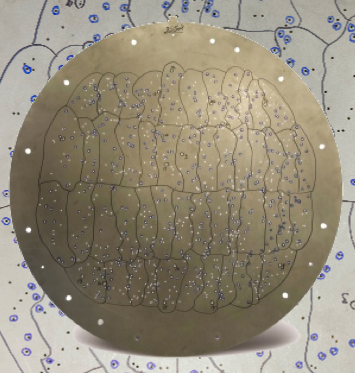Identifying galaxy groups for high redshift spectroscopic surveys
Sep. 20, 2023
This blog introduces major obstacles in identifying galaxy groups in galaxy surveys, especially for the upcoming high-$z$ surveys. We also introduce how to conquer these problems using state-of-the-art statistical learning tools.
This blog is based on arXiv:2006.05426.
Galaxy groups and clusters
This blog introduces how galaxies are formed and evolved in dark matter halos, and how halos merge with each other to build galaxy groups and clusters. In summary, a galaxy group/cluster is a collection of galaxies sharing a common dark matter halo. Therefore, it is straightforward to identify galaxy groups in cosmological simulations where the distribution of dark matter is accessible. However, identifying galaxy groups in observation is challenging, since the distribution of dark matter is unavailable.
Finding groups in observation
Most of the methods to identify galaxy groups in observation relies on the proximity of member galaxies, while other methods leverage other signature of galaxy groups and clusters, such as their X-ray emission or the distortion on the background cosmic microwave background, which will discussed in the future.
The simplistic method to identify galaxy groups is the Friends-of-Friends (FoF) method. The basic assumption is that two galaxies belong to a common galaxy group as long as their distance is below a prior threshold; the threshold is referred to as the linking length. For instance, if the distance between Gal-A and Gal-B is below the threshold, and the distance between Gal-B and Gal-C is also below the threshold, then Gal-A, Gal-B, and Gal-C belong to a common galaxy groups regardless of the distance between Gal-A and Gal-C.
Identifying galaxy groups in observation suffers from two observational effects. The first one is the redshift space distortion effect, where the line-of-sight distance of observed galaxies is contaminated by their peculiar velocities. To conquer this effect, we need two parameters for the linking lengths: one for the line-of-sight and the other one for the transverse direction. Nevertheless, member galaxies in two groups that are close to each other on the sphere are likely mixed with each other due to the projection effect. The second one is the spatial sampling effect, where the targeted galaxies has no fiber allocation due to fiber collision effect, which will be introduced in the next section. This effect can significantly compromise the performance of group finders. Following the above instance, if Gal-B is missed due to spatial sampling, and the distance between Gal-A and Gal-C does not satisfying the grouping criteria, then a group will be fragmented into two groups.
Spatial sampling of galaxy surveys
The spatial sampling effect refers to that some targeted galaxies have no fiber allocation due to the fiber collision effect. For low-$z$ surveys like SDSS, the spectra of galaxies are collected through the fibers plugged on a metal plate on the focal plane (see Fig. 1), and the fiber collision effect is that two fibers cannot be close to each other since we cannot drill two holes too close.

The situation is different for high-$z$ surveys. Firstly, high-$z$ surveys require large telescope since these galaxies are very faint, so it is impossible to manually drill the hole and replace the plate for each exposure. We need automatic fiber system where the positioning of each fiber is controlled by an robotic arm, as shown in Fig. 2. For these systems, each fiber can only move within a corresponding circle, so their positioning is more restrained. Even though we can mitigate this fiber collision effect through multiple exposure, the high inhomogeneity of galaxies on the sky requires $\approx$ 15 exposures to get full sampling for crowded regions and $\approx 3$ exposures for void regions. Therefore, fulling sampling means a huge waste of fiber times for those fibers in void regions. As a compromise, current surveys, like PFS and MOONS, will have an average spatial sampling rate of 70%, which means that about 30% targeted galaxies have no spectroscopic observation and this rate is higher in crowded regions.
Note that since the spatial sampling effect at high-$z$ does not stem from the ``collision'' between fibers, I prefer to use the general spatial sampling effect instead of the fiber collision effect.

Group finding at high redshift
Fig. 3 shows the impact of the incomplete spectroscopic redshift surveys on the group identification. Here we can see that even through we have identified most of the galaxy groups in the spectroscopic sample, which is indicated by the high completeness as a function of richness, there are still a significant fraction of galaxy groups missed, which is indicated by the low completeness as a function of halo mass. We have proposed a method based on the state-of-the-art statistical learning tool of random forest to assign galaxies with only photometric redshift to spectroscopic groups or as the central galaxy of a new group. The performance is shown in solid lines, from which one can see that most of the groups are retrieved.

Summary
The upcoming high-$z$ spectroscopic redshift surveys truly pose a serious challenge to the identification of cosmic structures. We for the first time pointing this problem out and propose a promising solution. Nevertheless, these is still many space for improvement.